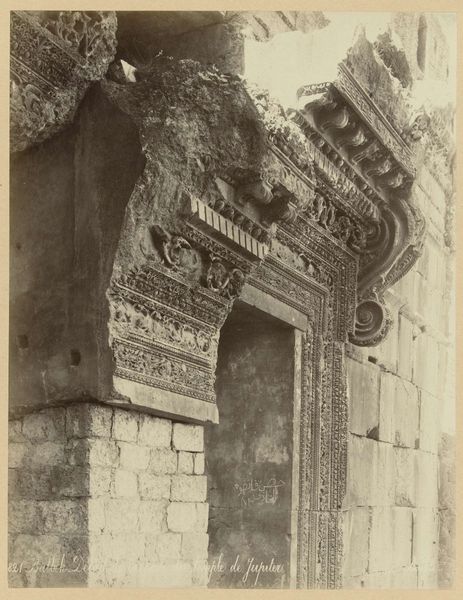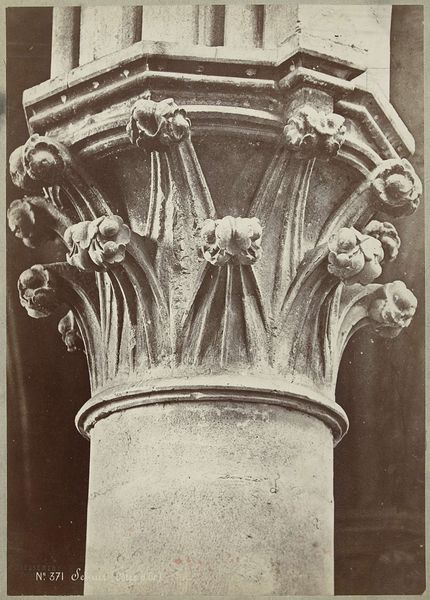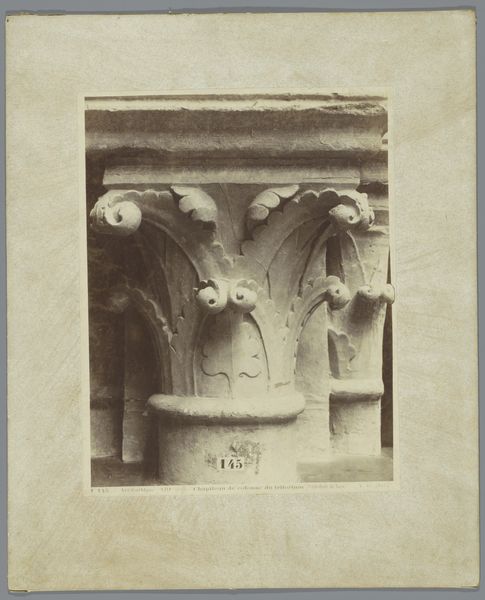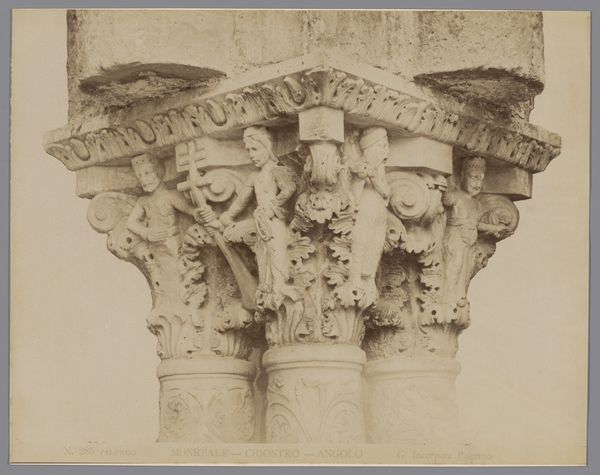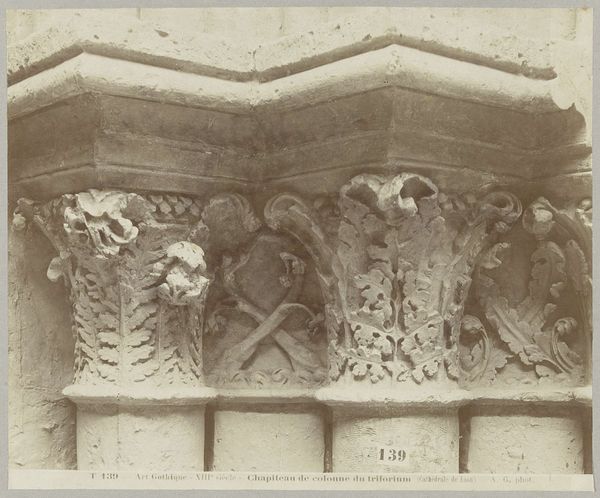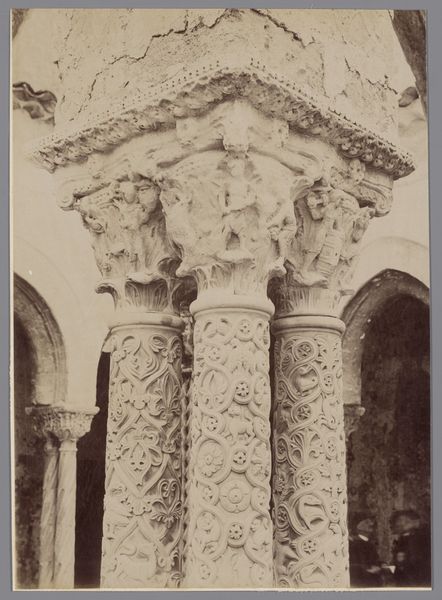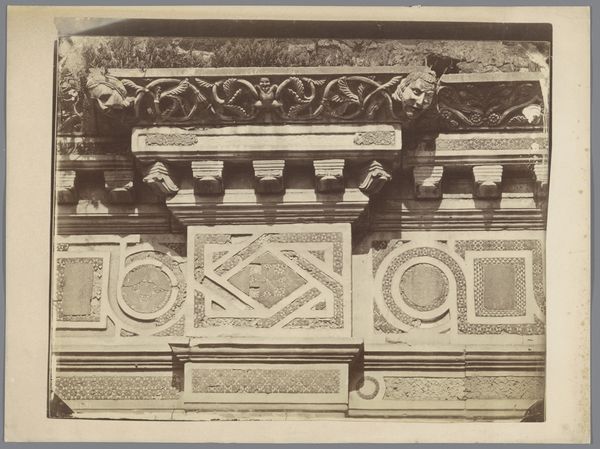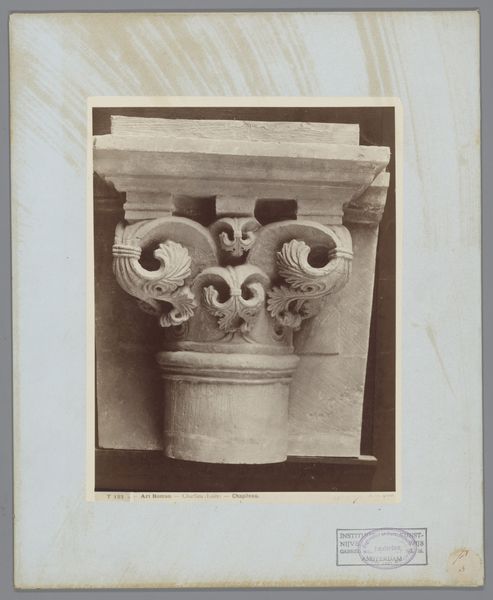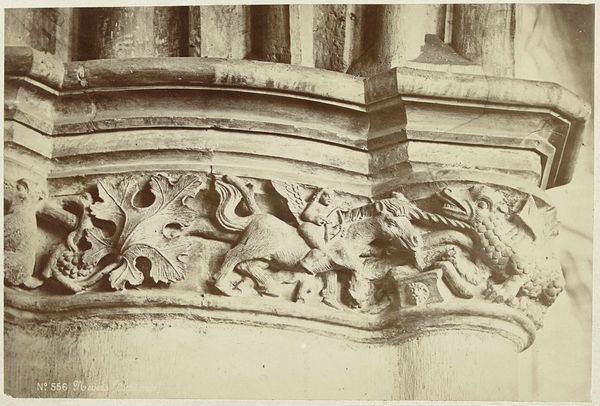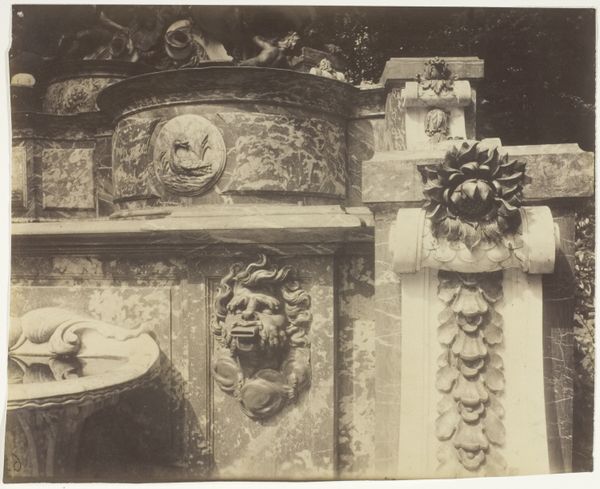
carving, photography, sculpture
#
medieval
#
carving
#
sculpture
#
photography
#
romanesque
#
sculpture
Dimensions: height 351 mm, width 248 mm, height 432 mm, width 296 mm
Copyright: Rijks Museum: Open Domain
Curator: Before us, we have a photograph, captured between 1870 and 1894 by Médéric Mieusement. It depicts a column capital from the cathedral of Le Puy-en-Velay. Editor: There's an immediate sense of weight to it, doesn't there? The rough texture of the stone, the shadows clinging to every groove… it feels both monumental and intimate. Curator: Indeed. Mieusement's photograph offers a unique perspective, bringing into focus a detail that, as part of a larger architectural whole, might often go unnoticed. These capitals, rooted in Romanesque tradition, serve not just a structural purpose, but also communicate ideology through imagery. Editor: Precisely. Look at those stylized leaves and what appears to be abstracted animal forms, maybe lions. They are less naturalistic and more symbolic; in this kind of artwork, everything serves to instruct as much as decorate, isn’t it? I wonder if they symbolize power, guardianship, or even hidden narratives pertinent to the cathedral's historical position. Curator: It’s entirely possible. In medieval art, symbolism was often deeply layered, reflecting biblical stories, moral allegories, and the prevailing worldview of the time. This photograph invites us to consider the craftsmanship that would have been employed when making that capital. Imagine the physical exertion needed, and the society's support and cultural impact necessary, when carving into such unforgiving material with limited technology. Editor: The very act of crafting such an object can be seen as resistance, defying the status quo to preserve traditions in tangible art. It shows a commitment of energy, but at the same time creates an artefact that promotes the dominance of established hierarchies. Curator: An insightful contradiction! Mieusement's image helps bridge the gap between past artistry and our contemporary appreciation. Editor: It certainly compels us to consider what and how the history is preserved. Thanks to photos like this we can explore not just beauty, but legacy, labor, and meaning.
Comments
No comments
Be the first to comment and join the conversation on the ultimate creative platform.

